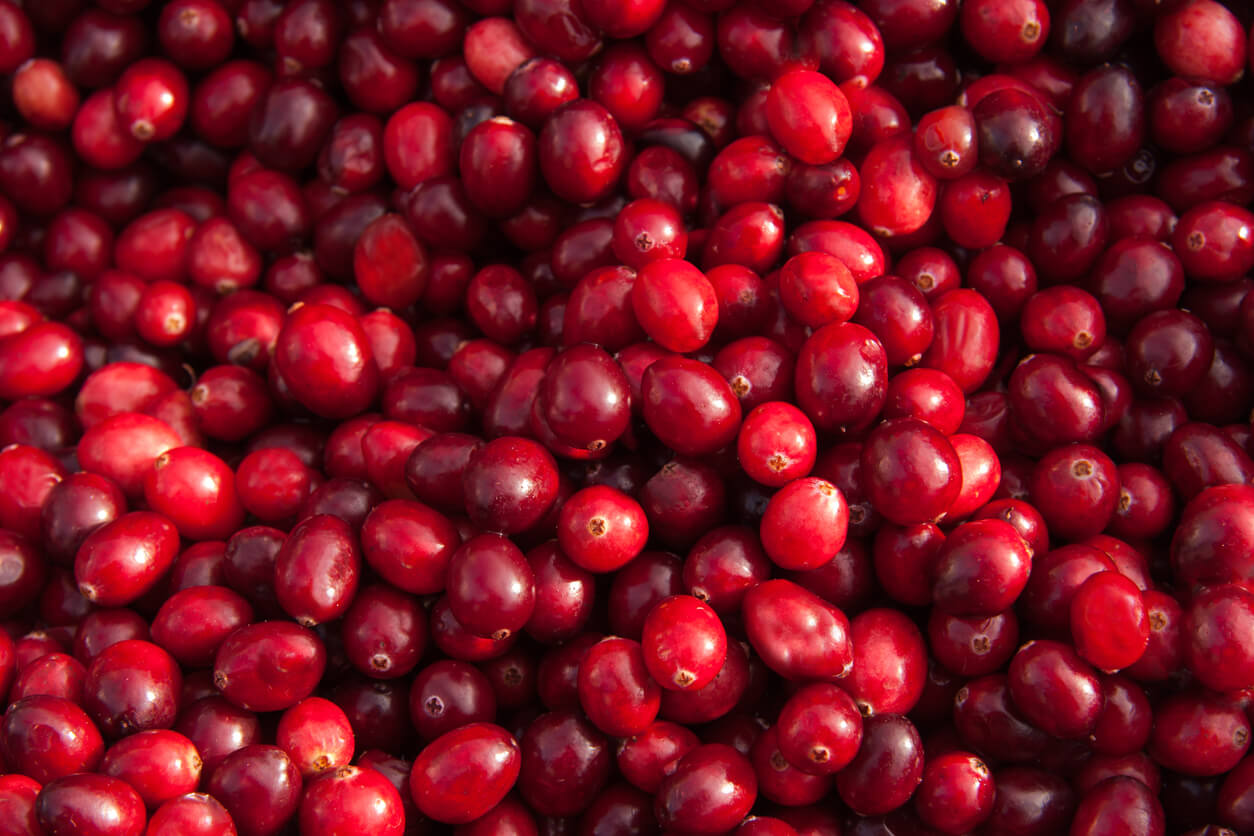
Fresh cranberries
There are actually several types of cranberries, but only two types that you’re likely to see in North America: true cranberries, or lowbush cranberries, which are the cranberries you’re used to seeing at the market; and highbush cranberries, which aren’t true cranberries, although they do resemble cranberries in both taste and appearance. But the highbush cranberry is a Viburnum, a member of the honeysuckle family (Caprifoliaceae).
It’s easy to tell the difference between lowbush and highbush cranberries: the true cranberries, the lowbush type, grow close to the ground. Highbush cranberries grow into huge shrubs 8 to 15 feet tall and 8 to 10 feet wide.
In parts of central Europe, Finland, and Germany, growers cultivate Vaccinium oxyococcus. This variety has smaller fruit than the North American cranberry. It’s commonly called the English mossberry.
We’re focusing on growing true cranberries, Vaccinium macrocarpon.
There are more than 100 cranberry varieties. Each time a new cultivar is developed, the plant’s DNA is often patented. Researchers at Rutgers University have worked to develop improved cranberry varieties, especially for commercial growers. Among those are more than a dozen that are the most popular and productive:
- Alfredo Compact
- Baily Compact
- Ben Lear
- Bergman
- Compactum
- Crimson Queen
- Crowley
- Early Black
- Franklin
- Howes
- McFarlin
- Pilgrim
- Redwing
- Scarlet Knight
- Searles
- Stevens
- Wentworth
If you get the opportunity to visit a commercial cranberry bog, you’re bound to find one or more of these varieties.
Of these varieties, a few have proven to be the most popular with home gardeners, including:
- Ben Lear
- Early Black
- Pilgrim
- Stevens
You may find that some nurseries or garden centers sell “American cranberry” plants, without specifying the cultivar. It’s a bit of a mystery, but if they’re suited for your zone, give them a try.
Have you tried growing cranberries yourself? If so, what type have you tried? Please share your experiences by commenting below.


 Previous
Previous

